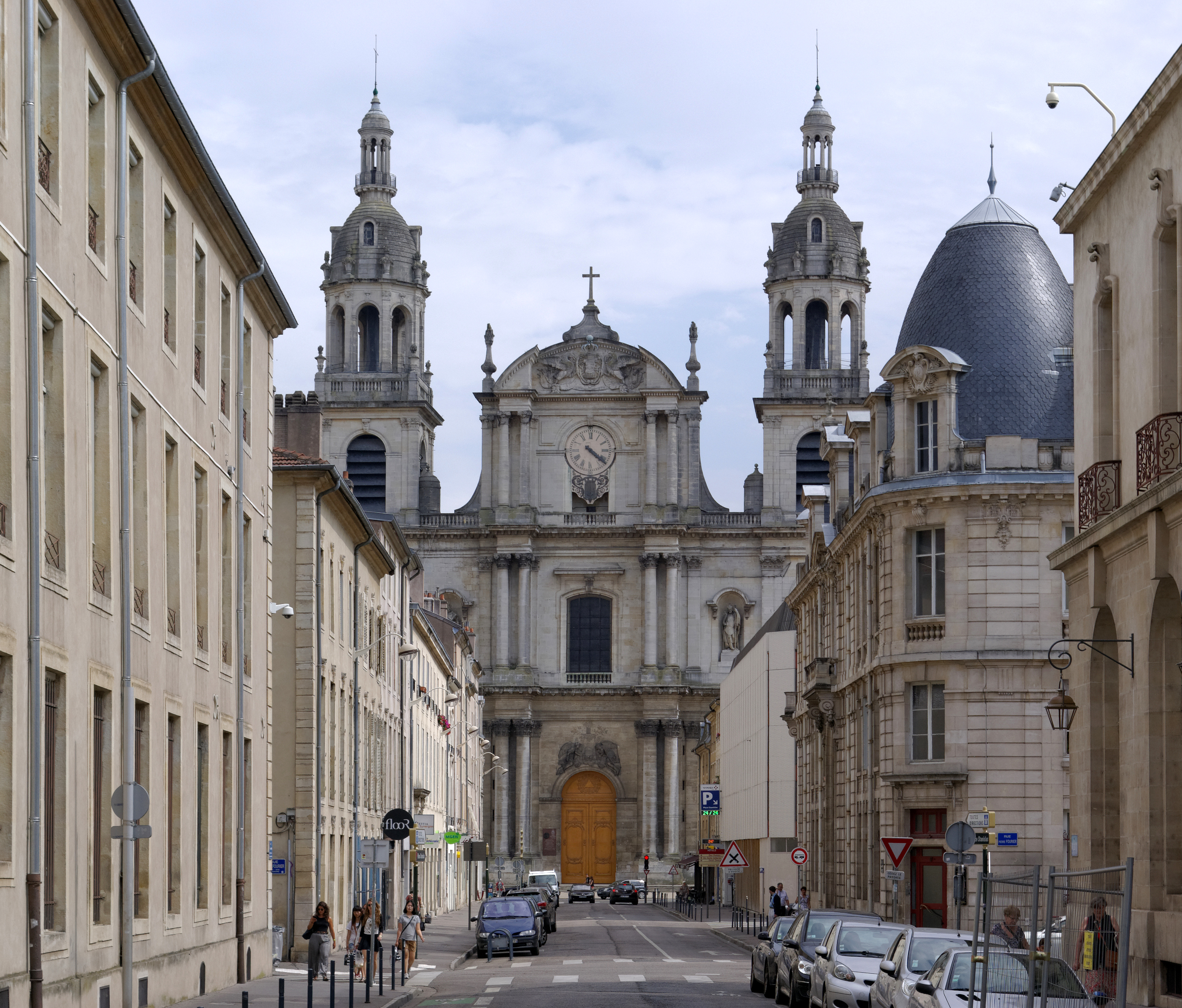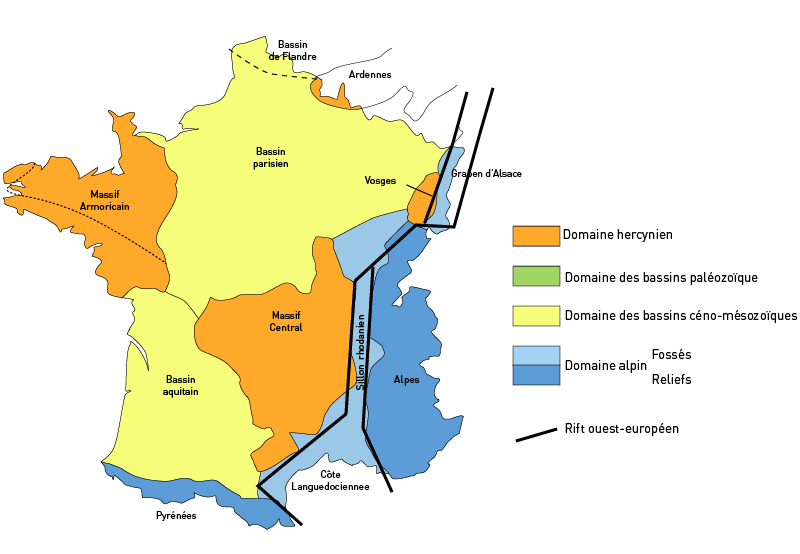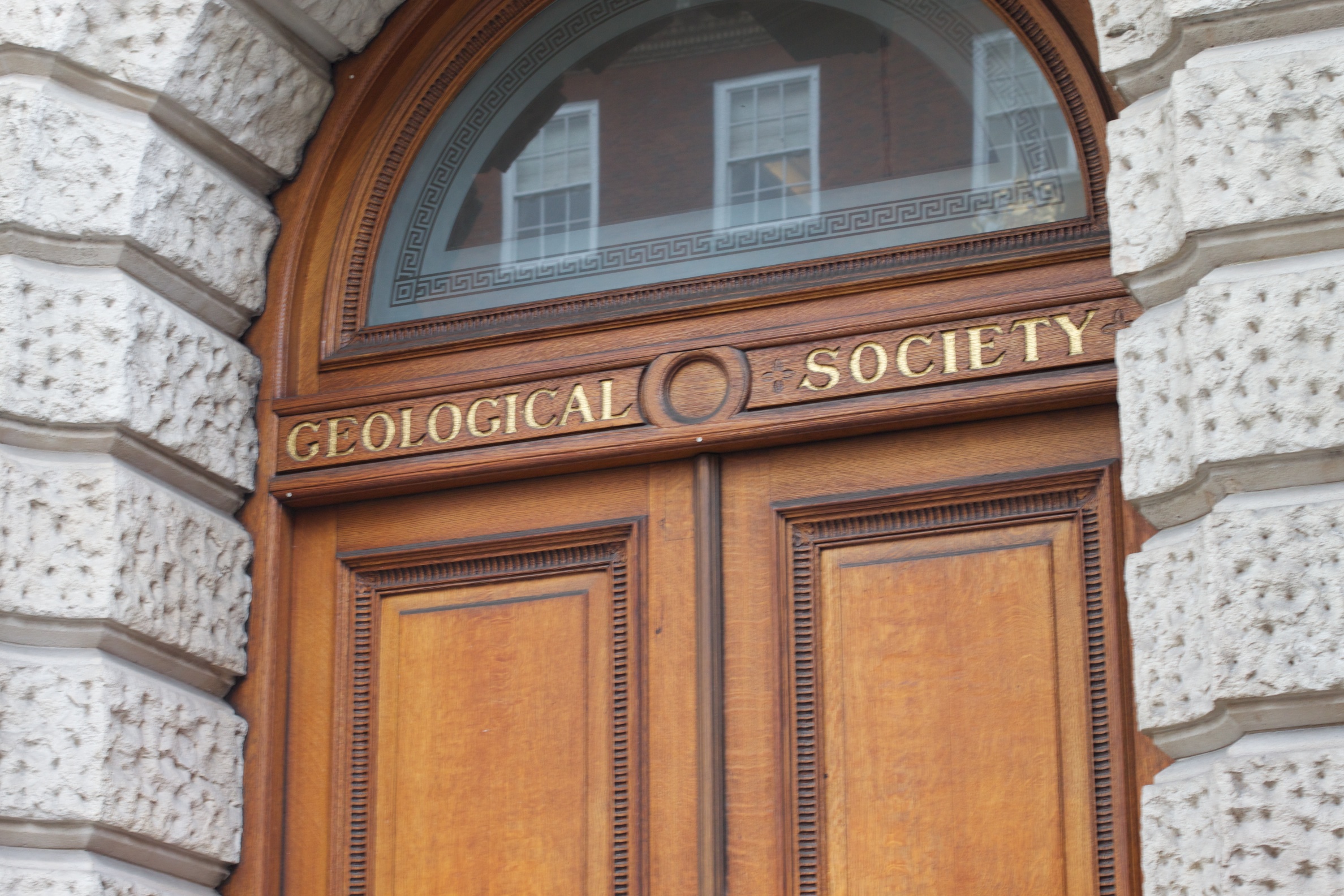|
Gérard Paul Deshayes
Gérard Paul Deshayes (; 13 May 1795 – 9 June 1875) was a French geologist and conchologist. Career He was born in Nancy, his father at that time being professor of experimental physics in the École Centrale of the département Meurthe He studied medicine in Strasbourg, and afterwards took the degree of ''bachelier ès lettres'' in Paris in 1821; but he abandoned the medical profession in order to devote himself to natural history. For some time he gave private lessons on geology, and subsequently became professor of natural history in the Muséum National d'Histoire Naturelle. He was distinguished for his researches on the fossil mollusca of the Paris Basin and of other areas Cenozoic cover. His studies on the relations of the fossil to the recent species led him as early as 1829 to conclusions somewhat similar to those arrived at by Lyell, to whom Deshayes rendered much assistance in connection with the classification of the, then, Tertiary system into Eocene, Miocene a ... [...More Info...] [...Related Items...] OR: [Wikipedia] [Google] [Baidu] |
Nancy, France
Nancy is the Prefectures in France, prefecture of the northeastern Departments of France, French department of Meurthe-et-Moselle. It was the capital of the Duchy of Lorraine, which was Lorraine and Barrois, annexed by France under King Louis XV in 1766 and replaced by a Provinces of France, province, with Nancy maintained as capital. Following its rise to prominence in the Age of Enlightenment, it was nicknamed the "capital of Eastern France" in the late 19th century. The metropolitan area of Nancy had a population of 508,793 inhabitants as of 2021, making it the 16th-largest functional area (France), functional urban area in France and Lorraine's largest. The population of the city of Nancy proper is 104,387 (2022). The motto of the city is —a reference to the thistle, which is a symbol of Lorraine. Place Stanislas, a large square built between 1752 and 1756 by architect Emmanuel Héré under the direction of Stanislaus I of Poland to link the medieval old town of Nancy and ... [...More Info...] [...Related Items...] OR: [Wikipedia] [Google] [Baidu] |
Paris Basin
The Paris Basin () is one of the major geological regions of France. It developed since the Triassic over remnant uplands of the Variscan orogeny (Hercynian orogeny). The sedimentary basin, no longer a single drainage basin, is a large sag in the craton, bordered by the Armorican Massif to the west, the Ardennes-Brabant axis to the north, the Massif des Vosges to the east, and the Massif Central to the south.Duval, B.C., 1992, Villeperdue Field, In Giant Oil and Gas Fields of the Decade, 1978-1988, AAPG Memoir 54, Halbouty, M.T., editor, Tulsa: American Association of Petroleum Geologists, Extent The region usually regarded as the Paris Basin is rather smaller than the area formed by the geological structure. The former occupies the centre of the northern half of the country, excluding Eastern France. The latter extends from the hills just south of Calais to Poitiers and from Caen to the brink of the middle Rhine Valley, east of Saarbrücken. Geography The landscape i ... [...More Info...] [...Related Items...] OR: [Wikipedia] [Google] [Baidu] |
Geological Society Of London
The Geological Society of London, known commonly as the Geological Society, is a learned society based in the United Kingdom. It is the oldest national geological society in the world and the largest in Europe, with more than 12,000 Fellows. Fellows are entitled to the postnominal FGS (Fellow of the Geological Society), over 2,000 of whom are Chartered Geologists (CGeol). The Society is a registered charity, no. 210161. It is also a member of the Science Council, and is licensed to award Chartered Scientist to qualifying members. The mission of the society is: "Making geologists acquainted with each other, stimulating their zeal, inducing them to adopt one nomenclature, facilitating the communication of new facts and ascertaining what is known in their science and what remains to be discovered". History The Society was founded on 13 November 1807 at the Freemasons' Tavern, Great Queen Street, in the Covent Garden district of London. It was partly the outcome of a previou ... [...More Info...] [...Related Items...] OR: [Wikipedia] [Google] [Baidu] |
Wollaston Medal
The Wollaston Medal is a scientific award for geology and the highest award granted by the Geological Society of London, the oldest geological society in the world. The medal is named after William Hyde Wollaston, and was first awarded in 1831. It was originally made of gold (1831–1845), then palladium, a metal discovered by Wollaston (1846–1860). It was switched to gold again from 1861 to 1929, and then back to palladium from 1930 to present. Laureates SourcGeological Society 1831–1850 *1831 William 'Strata' Smith *1835 Gideon Mantell *1836 Louis Agassiz *1837 Proby Thomas Cautley *1837 Hugh Falconer *1838 Richard Owen *1839 Christian Gottfried Ehrenberg *1840 André Hubert Dumont *1841 Adolphe-Théodore Brongniart *1842 Leopold von Buch *1843 Jean-Baptiste Élie de Beaumont *1843 Pierre Armand Dufrenoy *1844 William Conybeare *1845 John Phillips *1846 William Lonsdale *1847 Ami Boué *1848 William Buckland *1849 Joseph Prestwich *1850 William Hopkins 1851–19 ... [...More Info...] [...Related Items...] OR: [Wikipedia] [Google] [Baidu] |
Société Géologique De France
The Société géologique de France (SGF) is a French learned society founded on 17 March 1830. As of 2006, it counts 1,200 members. History At its creation, its statutes indicate is to "compete for the advancement of Earth Sciences and Planets, both in itself and in its relations with industry, agriculture, environment And Education". At that time, geology was mainly undertaken in France under the aegis of the Corps des Mines and the Academy of Sciences. In August 1830 the company was presented to the new King who had arrived on the road after the revolution of July 1830. Constant Prévost in this presentation on the freedom of action and thought of the members of the society "Sire, to become flourishing, the sciences need freedom". This liberty is not sought with regard to political power, nor to other scientific institutions, particularly the Academy of Sciences and the General Secretariat Georges Cuvier Jean Léopold Nicolas Frédéric, baron Cuvier (23 August 1769 – ... [...More Info...] [...Related Items...] OR: [Wikipedia] [Google] [Baidu] |
Algeria
Algeria, officially the People's Democratic Republic of Algeria, is a country in the Maghreb region of North Africa. It is bordered to Algeria–Tunisia border, the northeast by Tunisia; to Algeria–Libya border, the east by Libya; to Algeria–Niger border, the southeast by Niger; to Algeria–Western Sahara border, the southwest by Mali, Mauritania, and Western Sahara; to Algeria–Morocco border, the west by Morocco; and to the north by the Mediterranean Sea. The capital and List of cities in Algeria, largest city is Algiers, located in the far north on the Mediterranean coast. Inhabited since prehistory, Algeria has been at the crossroads of numerous cultures and civilisations, including the Phoenicians, Numidians, Ancient Rome, Romans, Vandals, and Byzantine Greeks. Its modern identity is rooted in centuries of Arab migrations to the Maghreb, Arab Muslim migration waves since Muslim conquest of the Maghreb, the seventh century and the subsequent Arabization, Arabisation ... [...More Info...] [...Related Items...] OR: [Wikipedia] [Google] [Baidu] |
Mollusk
Mollusca is a phylum of protostomic invertebrate animals, whose members are known as molluscs or mollusks (). Around 76,000 extant species of molluscs are recognized, making it the second-largest animal phylum after Arthropoda. The number of additional fossil species is estimated between 60,000 and 100,000, and the proportion of undescribed species is very high. Many taxa remain poorly studied. Molluscs are the largest marine phylum, comprising about 23% of all the named marine organisms. They are highly diverse, not just in size and anatomical structure, but also in behaviour and habitat, as numerous groups are freshwater and even terrestrial species. The phylum is typically divided into 7 or 8 taxonomic classes, of which two are entirely extinct. Cephalopod molluscs, such as squid, cuttlefish, and octopuses, are among the most neurologically advanced of all invertebrates—and either the giant squid or the colossal squid is the largest known extant i ... [...More Info...] [...Related Items...] OR: [Wikipedia] [Google] [Baidu] |
Lotic
River ecosystems are flowing waters that drain the landscape, and include the biotic (living) interactions amongst plants, animals and micro-organisms, as well as abiotic (nonliving) physical and chemical interactions of its many parts.Angelier, E. 2003. Ecology of Streams and Rivers. Science Publishers, Inc., Enfield. Pp. 215."Biology Concepts & Connections Sixth Edition", Campbell, Neil A. (2009), page 2, 3 and G-9. Retrieved 2010-06-14. River ecosystems are part of larger watershed networks or catchments, where smaller headwater streams drain into mid-size streams, which progressively drain into larger river networks. The major zones in river ecosystems are determined by the river bed's gradient or by the velocity of the current. Faster moving turbulent water typically contains greater concentrations of dissolved oxygen, which supports greater biodiversity than the slow-moving water of pools. These distinctions form the basis for the division of rivers into upland and lo ... [...More Info...] [...Related Items...] OR: [Wikipedia] [Google] [Baidu] |
André Étienne D'Audebert De Férussac
Baron André Étienne Justin Pascal Joseph François d'Audebert de Férussac (30 December 1786 – 21 January 1836) was a French naturalist best known for his studies of molluscs. (Two of his given names are sometimes spelt Just or Juste instead of Justin, and d'Audibert, d'Audebard, or d'Audeberd instead of "d'Audebert".) He was born in Chartron, near Lauzerte in the province of Quercy (now in Tarn-et-Garonne), the son of Jean Baptiste Louis d'Audibert de Férussac and Marie Catherine Josèphe de Rozet, and was professor of geography and statistics at the École d'état-major in Paris. Taxa Férussac named and described numerous taxa of gastropods, including: * '' Cochlodina'' Férussac, 1821, a land snail genus * ''Helicostyla'' Férussac, 1821, a land snail genus Various other taxa were named in honor of him, including: * Ferussaciidae Bourguignat, 1883,Bourguignat, J. R. 1883. ''Historie malacologique de l'Abyssinie''. Annales des Sciences Naturelles, Zoologie, ser. 6, 1 ... [...More Info...] [...Related Items...] OR: [Wikipedia] [Google] [Baidu] |
Pliocene
The Pliocene ( ; also Pleiocene) is the epoch (geology), epoch in the geologic time scale that extends from 5.33 to 2.58See the 2014 version of the ICS geologic time scale million years ago (Ma). It is the second and most recent epoch of the Neogene Period in the Cenozoic, Cenozoic Era. The Pliocene follows the Miocene Epoch and is followed by the Pleistocene Epoch. Prior to the 2009 revision of the geologic time scale, which placed the four most recent major glaciations entirely within the Pleistocene, the Pliocene also included the Gelasian Stage, which lasted from 2.59 to 1.81 Ma, and is now included in the Pleistocene. As with other older geologic periods, the Stratum, geological strata that define the start and end are well-identified but the exact dates of the start a ... [...More Info...] [...Related Items...] OR: [Wikipedia] [Google] [Baidu] |
Miocene
The Miocene ( ) is the first epoch (geology), geological epoch of the Neogene Period and extends from about (Ma). The Miocene was named by Scottish geologist Charles Lyell; the name comes from the Greek words (', "less") and (', "new") and means "less recent" because it has 18% fewer modern marine invertebrates than the Pliocene has. The Miocene followed the Oligocene and preceded the Pliocene. As Earth went from the Oligocene through the Miocene and into the Pliocene, the climate slowly cooled towards a series of ice ages. The Miocene boundaries are not marked by distinct global events but by regionally defined transitions from the warmer Oligocene to the cooler Pliocene Epoch. During the Early Miocene, Afro-Arabia collided with Eurasia, severing the connection between the Mediterranean and Indian Oceans, and allowing the interchange of fauna between Eurasia and Africa, including the dispersal of proboscideans and Ape, hominoids into Eurasia. During the late Miocene, the conn ... [...More Info...] [...Related Items...] OR: [Wikipedia] [Google] [Baidu] |
Eocene
The Eocene ( ) is a geological epoch (geology), epoch that lasted from about 56 to 33.9 million years ago (Ma). It is the second epoch of the Paleogene Period (geology), Period in the modern Cenozoic Era (geology), Era. The name ''Eocene'' comes from the Ancient Greek (''Ēṓs'', 'Eos, Dawn') and (''kainós'', "new") and refers to the "dawn" of modern ('new') fauna that appeared during the epoch.See: *Letter from William Whewell to Charles Lyell dated 31 January 1831 in: * From p. 55: "The period next antecedent we shall call Eocene, from ήως, aurora, and χαινος, recens, because the extremely small proportion of living species contained in these strata, indicates what may be considered the first commencement, or ''dawn'', of the existing state of the animate creation." The Eocene spans the time from the end of the Paleocene Epoch to the beginning of the Oligocene Epoch. The start of the Eocene is marked by a brief period in which the concentration of the carbon isoto ... [...More Info...] [...Related Items...] OR: [Wikipedia] [Google] [Baidu] |







